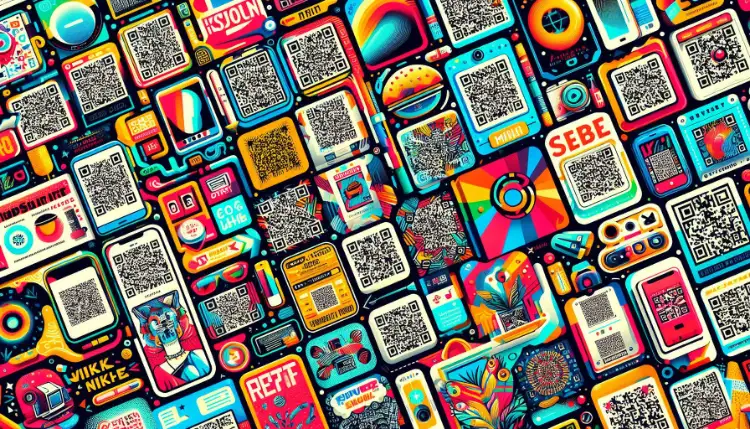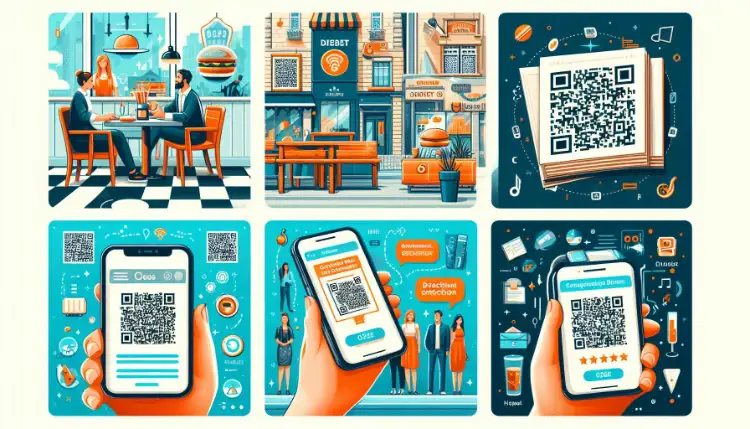
The Origin of QR Codes
QR codes, or Quick Response codes, were developed in 1994 by Denso Wave, a subsidiary of the Toyota Group in Japan. Initially designed to track vehicles during the manufacturing process, QR codes were intended to improve upon traditional barcodes by providing more information and being easily scannable from multiple directions. The two-dimensional matrix barcode quickly became popular due to its versatility and ability to store significantly more data than conventional barcodes.
How QR Codes Work
Structure and Encoding:
Modules: A QR code consists of black squares (modules) arranged on a white background within a square grid.
Data Storage: Each module represents binary data (0s and 1s), which can encode various types of information, including numeric, alphanumeric, byte/binary, and even Kanji characters.
Error Correction: QR codes employ Reed-Solomon error correction, allowing them to be scanned accurately even if part of the code is damaged or obscured. This error correction capability can restore up to 30% of the data depending on the level of error correction applied.
Structure of a QR Code:
Positioning Patterns: These are three large squares located at the corners of the QR code, enabling the scanner to detect the code’s orientation.
Alignment Patterns: Smaller squares within the code ensure that it can be read correctly even if it’s distorted or at an angle.
Timing Patterns: These alternating black and white modules help the scanner determine the size of the data matrix.
Format Information: This section includes error correction level and mask pattern information.
Data and Error Correction Information: The core of the QR code, containing the actual data and error correction bits.
Scanning Process:
Detection: A QR code scanner or camera captures the image of the QR code.
Analysis: The scanner’s software identifies the positioning, alignment, and timing patterns to decode the data structure.
Decoding: The binary data is then converted into its original form, whether it’s a URL, text, or other types of information.
Applications:
Marketing and Advertising: QR codes can link consumers directly to websites, promotional materials, and digital content.
Product Tracking: In manufacturing and retail, QR codes are used for inventory management and tracking.
Payments: Mobile payment systems utilize QR codes for quick and secure transactions.
Authentication: QR codes can authenticate products, verify event tickets, and provide secure access to digital services.
From their inception at Denso Wave to their widespread application today, QR codes have revolutionized how data is stored, accessed, and utilized in various industries. Their ability to hold extensive information in a compact format and be scanned effortlessly has made them an integral part of modern technology and communication.
The Use of QR Codes in Various Industries

Retail
Product Information:
- QR codes on product packaging can link to detailed product information, including ingredients, usage instructions, and manufacturing details.
- Enhances transparency and helps customers make informed decisions.
Promotions:
- Retailers use QR codes in advertising campaigns to direct customers to special offers, discounts, and loyalty programs.
- QR codes can be integrated into print ads, flyers, and in-store displays to provide instant access to promotional content.
Payments:
- QR codes facilitate contactless payments, providing a convenient and secure method for transactions.
- Customers can scan the QR code at the checkout to pay via mobile payment apps, reducing the need for cash or cards.
Hospitality
Menus:
- Restaurants and cafes use QR codes to provide digital menus, reducing the need for physical menus and enhancing hygiene.
- Customers can access up-to-date menu items, specials, and nutritional information by scanning the code.
Bookings:
- Hotels and resorts use QR codes for easy online booking and check-in processes.
- Guests can scan QR codes to access booking details, room amenities, and local attractions.
Customer Feedback:
- QR codes on receipts or table tents direct customers to online feedback forms and surveys.
- Facilitates real-time feedback collection and helps improve service quality.
Healthcare
- Patient Information:
QR codes on patient wristbands link to electronic health records (EHR), providing healthcare providers quick access to medical histories, allergies, and treatment plans. - Enhances patient safety and care coordination.
Appointment Scheduling:
- Clinics and hospitals use QR codes to streamline appointment scheduling and reminders.
- Patients can scan QR codes to book appointments, view schedules, and receive notifications.
Medication Tracking:
- QR codes on medication packaging provide detailed information about dosage, side effects, and interactions.
- Helps patients adhere to medication regimens and avoid potential complications.
Education
Learning Materials:
- Teachers and educational institutions use QR codes to distribute digital learning materials, such as e-books, videos, and interactive content.
- Enhances accessibility and engagement in the learning process.
Attendance:
- QR codes simplify attendance tracking by allowing students to scan codes upon entering the classroom.
- Reduces administrative burden and ensures accurate records.
Assignments:
- QR codes can link to assignment details, submission portals, and supplementary resources.
- Facilitates efficient assignment distribution and submission.
Transportation
Ticketing:
- QR codes are widely used for electronic tickets in public transport, airlines, and events.
- Passengers can scan their QR code tickets for quick and contactless boarding.
Schedules:
- QR codes at bus stops, train stations, and airports provide real-time schedule information.
- Passengers can access up-to-date departure and arrival times by scanning the codes.
Route Information:
- QR codes link to maps and route details, helping passengers navigate their journeys.
- Enhances travel convenience and reduces confusion.
Real Estate
Property Listings:
- QR codes on real estate signs and advertisements link to detailed property listings, including photos, descriptions, and agent contact information.
- Prospective buyers can easily access and share property details.
Virtual Tours:
- QR codes provide access to virtual tours of properties, allowing potential buyers to explore homes remotely.
- Enhances the property viewing experience and broadens the reach of listings.
QR codes have become indispensable tools across various industries, streamlining processes, enhancing customer engagement, and improving access to information. Their versatility and ease of use make them a valuable asset in the digital age.
How Can QR Codes Help Your Business

Transform your Customer Engagement
Are you ready to take your business to the next level? QR codes can revolutionise how you engage with your customers.
Improved Customer Engagement
QR codes make it easy for customers to interact with your brand. By simply scanning a code, they can access product information, special offers, and more. This increased engagement can lead to higher customer satisfaction and loyalty.
Streamlined Access to Information
Gone are the days when customers had to wade through pages of information. With QR codes, they get instant access to the details they need. Whether it’s a technical specification for a hydraulic system or a user manual for a tool, streamline the process and keep your customers happy.
Convenience for Users
Customers love convenience. QR codes make it easy for them to find what they’re looking for quickly and effortlessly. No more searching or asking for help—everything they need is just a scan away.
Ease of Use and Cost-Effectiveness
Implementing QR codes is straightforward and cost-effective. They can be printed on any material, from brochures to equipment, making it simple for tradesmen and business owners to integrate them into their operations without breaking the bank.
Ready to Learn More?
Don’t miss out on the opportunity to improve your business with QR codes. Click the link below to book a discovery meeting and find out how we can help you implement this powerful tool.
